Neck Shaft Woods
Guitar and Bass necks are usually composed of two parts - the neck shaft and the fingerboard. These two parts may be the same or different woods. In many cases, the neck and fingerboard will be different pieces of wood, even if they are the same species. However, a single piece of wood may be used for both the neck and fretboard - these are called "one piece". Many different woods are used for both parts. We will detail the woods that we sell in our custom guitar necks, highlighting a few of the common “classic” combinations along the way: maple and mahogany necks, with maple, ebony and rosewood fingerboards.
|
Maple. Maple is often used in Fender and many other manufacturers instruments. In some cases, a solid, one-piece neck with integral fretboard of maple is used. In this case, the truss rod is inserted into the neck through a slot in the back of the neck and then the slot is covered with another (generally contrasting) piece of wood. In other cases, the maple neck is topped with a fretboard of a second type of wood (commonly, rosewood). Maple necks add tightness and cutting tones to a guitar. It is a characteristically bright neck wood choice. Maple is used for both neck shaft wood and fingerboards. |

|
||||||||||||||||||||
|
Mahogany. Mahogany necks are often coupled with a mahogany or mahogany/maple body, such as on Gibson’s instruments. Mahogany is more porous and open than maple, and does not have maple’s hardness, strength, or stability. Mahogany is used for neck shafts only. It is generally topped with Ebony, Rosewood or some other hard wood.
|
 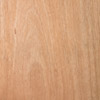
|
||||||||||||||||||||
|
Bloodwood. Bloodwood is traditionally known by the name Satine. Bloodwood is a bright red color that will darken to a brownish red over time with exposure to light. Applying a thick finish and keeping the wood out of sunlight can help slow this change. Bloodwood grain is usually straight or slightly interlocked. Bloodwood is used for both neck shafts and for fingerboards.
|

|
||||||||||||||||||||
|
Bubinga. Bubinga ranges from a pinkish red to a darker reddish brown with darker purple or black streaks. Sapwood is a pale straw color and is clearly demarcated from the heartwood. Bubinga is frequently seen with a variety of figure. It has grain that is straight to interlocked. Bubinga is used for neck shafts.
|

|
||||||||||||||||||||
|
Canarywood. Canarywood’s color can vary a fair amount, from a pale yellow-orange to a darker reddish brown, usually with darker streaks. Color tends to darken and streaking becomes less pronounced with age. Canarywood is used for neck shafts and for fingerboards.
|

|
||||||||||||||||||||
|
Padouk. Padouk’s color varies from pale pinkish orange to deep brownish red. Most pieces start reddish orange when cut, darkening substantially over time to a reddish/purplish. Padouk is used for neck shafts and for fingerboards.
|

|
||||||||||||||||||||
|
PurpleHeart. Purpleheart is a dull grayish/purplish brown when first cut. With light exposure, the wood becomes a deeper purple. With age and exposure to UV light, the wood becomes a dark brown with a hint of purple. This color-shift can be slowed and minimized by using a UV inhibiting finish on the wood. Purpleheart is used for neck shafts and for fingerboards.
|

|
||||||||||||||||||||
|
Indian Rosewood. Indian Rosewood varies from a golden brown to a deep purplish brown, with darker brown streaks. The wood darkens with age, usually becoming a deep brown. This is beautiful wood – either as a guitar neck, fingerboard or guitar body (it was good enough for George Harrison, so it is good enough for us!). Rosewood is subject to CITES import and export restrictions. For this reason, we do not ship this wood outside of the USA. Indian Rosewood is used for neck shafts.
|

|
||||||||||||||||||||
|
Walnut. Walnut range from a lighter pale brown to a dark chocolate brown with darker brown streaks. Color can sometimes have a grey, purple, or reddish cast. Walnut is used for both neck shaft and fingerboards.
|

|
||||||||||||||||||||
|
Wenge. Wenge is medium brown, sometimes with a reddish or yellowish hue, with nearly black streaks. Upon application of a wood finish (particularly an oil finish) the wood can become nearly black. Wenge is used for both neck shafts and for fingerboards.
|

|
||||||||||||||||||||
Fingerboard Woods
| Maple. Maple is a standard fingerboard choice. Many varieties of maple are used, including flatsawn, quartersawn, flame, curly and Birdseye. Additionally, maple does very well when roasted – making for very attractive and stable fingerboards. We offer all of these choices on our custom necks! |  |
||||||||||||||||
|
Rosewood. Along with maple, rosewood is the one of the most common fingerboard woods. When paired with a mahogany neck, which has a warm, mellow tone, the rosewood fingerboard contributes to complex highs, thick and creamy lows, and an appealing midrange. When paired with maple necks, rosewood fretboards change the maple neck’s bright characteristic tonal properties to become a little warmer and sweeter. The maple provides sparkle in the highs with the rosewood mellowing the tone and thickening the lows. In addition to the tonal characteristics that the fingerboard imparts, it also changes the feel of the neck. A player’s choice of a maple fingerboard or rosewood fingerboard may be as much about feel or appearance as it is about tone. Rosewood is subject to CITES import and export restrictions. For this reason, we do not ship this wood outside of the USA. |
  |
||||||||||||||||
|
Ebony. A popular fingerboard upgrade option, the ebony fretboard provides more tightness, clarity, and definition, as compared to rosewood fingerboards. It is a very dense, hard wood, providing for a fast attack from the instrument. It offers a muscular, controlled bass, and snappy, sizzling highs. With a mahogany back contributing some warmth and openness to the brew, this can be a very appealing pairing. Ebony wears well. It doesn’t wear away after years of finger and string contact nearly as easily as rosewood does.
|
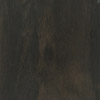 |
||||||||||||||||
|
Walnut. Walnut is becoming a more popular choice for fingerboards. Walnut range from a lighter pale brown to a dark chocolate brown with darker brown streaks. Color can sometimes have a grey, purple, or reddish cast. Walnut is used for both neck shaft and fingerboards.
|
 |
||||||||||||||||
|
Cocobolo. Cocobolo offers a variety of colors, from yellow, orange, red, and shades of brown with streaks of black or purple. Colors are lighter when freshly cut, and darken with age. Cocobolo is a species of Rosewood. As such it is subject to CITES import and export restrictions. For this reason, we do not ship this wood outside of the USA.
|
 |
||||||||||||||||
|
Granadillo. Granadillo is a new name for many American guitarist and luthiers, but is fairly common in the trade in South America. It is non-porous, straight grained, very dense, and has a ringing, bright tap tone. The reddish-brown color will darken to a brick color over time much like Honduran Rosewood. This wood is also known as Macacauba, Macawood, Hormigo, and Orange Agate.
|
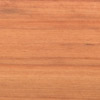 |
||||||||||||||||
|
Pau Ferro. Pau Ferro is also known as Morado, Bolivian Rosewood, and Santos Rosewood. It varies widely in color, from reddish/orange to dark brown with black streaking. It typically has straight grain and a fine texture. The wood has been as a substitute for Brazilian Rosewood. Although the wood is not technically in the Dalbergia genus, it’s in a closely-related genus (Machaerium). This wood is not controlled by CITES so there are no import or export restrictions in place.
|
 |
||||||||||||||||
|
Bloodwood. Bloodwood is traditionally known by the name Satine. Bloodwood is a bright red color that will darken to a brownish red over time with exposure to light. Applying a thick finish and keeping the wood out of sunlight can help slow this change. Bloodwood grain is usually straight or slightly interlocked. Bloodwood is used for both neck shafts and for fingerboards.
|
 |
||||||||||||||||
|
Bocote. Bocote is a yellow brown with dramatic dark brown to black stripes. Color tends to darken with age. The grain patterning can be striking, particularly on flatsawn pieces. It is common to see many eyes and other figuring in Bocote.
|
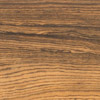 |
||||||||||||||||
|
Canarywood. Canarywood’s color can vary a fair amount, from a pale yellow-orange to a darker reddish brown, usually with darker streaks. Color tends to darken and streaking becomes less pronounced with age. Canarywood is used for neck shafts and for fingerboards.
|
 |
||||||||||||||||
|
Lacewood. Lacewood has prominent flecking that gives this wood its name. The wood is a reddish brown with grey or light brown rays, which result in a lace pattern when quartersawn. Lacewood has the most pronounced figure and displays the largest flecks when perfectly quartersawn.
|
 |
||||||||||||||||
|
Leopardwood. Leopardwood has prominent flecking that gives this wood its names. The wood is a medium to dark reddish brown with grey or light brown rays, which resemble the spots of a leopard. Leopardwood has the most pronounced figure and displays the largest flecks when perfectly quartersawn.
|
 |
||||||||||||||||
|
Padouk. Padouk’s color varies from pale pinkish orange to deep brownish red. Most pieces start reddish orange when cut, darkening substantially over time to a reddish/purplish. Padouk is used for neck shafts and for fingerboards.
|
 |
||||||||||||||||
|
Purpleheart. Purpleheart is a dull grayish/purplish brown when first cut. With light exposure, the wood becomes a deeper purple. With age and exposure to UV light, the wood becomes a dark brown with a hint of purple. This color-shift can be slowed and minimized by using a UV inhibiting finish on the wood. Purpleheart is used for neck shafts and for fingerboards.
|
 |
||||||||||||||||
|
Rocklite. Rocklite is a man made product, engineered entirely from real, sustainable wood. Rocklite is a semi synthetic wood with uniform grain and color characteristics. It is quite hard and works well for fingerboards. Please see http://www.rocklite.co.uk/ for details. |
 |
||||||||||||||||
|
Wenge. Wenge is medium brown, sometimes with a reddish or yellowish hue, with nearly black streaks. Upon application of a wood finish (particularly an oil finish) the wood can become nearly black. Wenge is used for both neck shafts and for fingerboards.
|
 |
||||||||||||||||
|
Zebrawood. Also known as Zebrano, Zebrawood is a light brown or cream color with dark blackish brown streaks vaguely resembling a zebra’s stripes. The stripes can be either chaotic and wavy when flatsawn, or somewhat uniform when quartersawn.
|
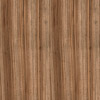 |
||||||||||||||||
|
Ziricote. Ziricote ranges from medium to dark brown, often with either a green or purple hue and normally has darker bands of black growth rings. Ziricote has a very unique appearance, sometimes referred to as “spider-webbing” or “landscape” grain figure.
|
 |
||||||||||||||||
Neck Profiles
Alloy Guitars offer several neck profiles on our custom neck builds. These profiles are shown below. If you have a different profile you would like to see, please contact us to discuss.
| Profile | Description | 1St Fret Thickness | 12th Fret Thickness | 1st Fret Diagram |
|---|---|---|---|---|
| Slim C | Slim And Fast. This is our most popular profile for modern players. |
0.81 20.6mm |
0.86 21.8mm |
 |
| Roundback | A throwback to instruments of the 1950’s. Not too thick, not too thin. Similar in feel to the Slim C, with a little more meat in your palm. |
0.86 21.8mm |
0.96 24.4mm |
 (Thin C profile shown dotted) (Thin C profile shown dotted) |
| Fatback | Deep U shape for a real vintage feel. |
1.0” 25.4mm |
1.0” 25.4mm |
 (Thin C profile shown dotted) (Thin C profile shown dotted) |
| Boatneck | Deep V vintage-styled shape |
1.0” 25.4mm |
1.0” 25.4mm |
 (Thin C profile shown dotted) (Thin C profile shown dotted) |
Fretboard Radius
What is a Fingerboard Radius?
We offer several fingerboard radius choices, including both single radius and compound radius fretboards.
What is a fretboard radius? A picture speaks a thousand words:

As you can see, if you draw a circle with a given radius the fingerboard with the corresponding radius matches the profile on the resulting circle.
Who Cares?
A fretboard with a smaller radius is easier for chording. The roundness of the fingerboard is comfortable to play. However, smaller radius fretboards don't do as well for players who do a lot of intense string bending. This is because during string bends, higher frets may interfere with string vibration and may bottom out. For this reason, it is more difficult to get an ultra low action on smaller radius fingerboards - which is often a goal for aggressive players.
Single? Compound? WTH?
A single radius fretboard keeps the same radius across the entire fretboard. In contrast, a compound radius fretboard changes the radius, getting flatter as you progress up the fretboard.
Compound radius fingerboards have achieved a bit of popularity for their flexibility - easy chording in lower positions, along with the possibility of low action and aggressive bending in the upper positions.
Inlays
Inlay Materials
We offer a variety of inlay materials:
| Type | Available Colors | Shapes | Photos |
|---|---|---|---|
| Plastic | Black, White | All | |
| Mother of Pearl (MOP) | Black, White, Gold, Green (Paua Abalone) | Dots only |    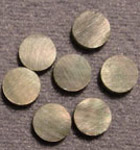 |
| Pearloid | Black, White, Gold, Blue, Red, Green | All except dots |       |
| Glow In The Dark | Green | Dots Only | 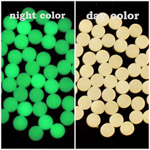 |
Inlay Shapes
We offer a variety of inlay shapes:
| Fretboard Inlay Shape | Picture | Available Materials |
|---|---|---|
| Dots | Plastic, MOP, Glow In the Dark | |
| Rectangles | |
Plastic, Pearloid |
| Trapezoids | |
Plastic, Pearloid |
| Shark Fins | |
Plastic, Pearloid |
| Double Triangles | |
Plastic, Pearloid |
Side Dots
Side dot material depends on the type of Inlay material used:
| Inlay materials | Side Dot material |
|---|---|
| Plastic | Matching Plastic |
| MOP | Matching MOP |
| Pearloid | Plastic (black or white) |
| Glow In The Dark | Matching Glow In The Dark |
Inlays
Inlay Materials
We offer a variety of inlay materials:
| Type | Available Colors | Shapes | Photos |
|---|---|---|---|
| Plastic | Black, White | All | |
| Mother of Pearl (MOP) | Black, White, Gold, Green (Paua Abalone) | Dots only |     |
| Pearloid | Black, White, Gold, Blue, Red, Green | All except dots |       |
| Glow In The Dark | Green | Dots Only |  |
Inlay Shapes
We offer a variety of inlay shapes:
| Fretboard Inlay Shape | Picture | Available Materials |
|---|---|---|
| Dots | Plastic, MOP, Glow In the Dark | |
| Rectangles | |
Plastic, Pearloid |
| Trapezoids | |
Plastic, Pearloid |
| Shark Fins | |
Plastic, Pearloid |
| Double Triangles | |
Plastic, Pearloid |
Side Dots
Side dot material depends on the type of Inlay material used:
| Inlay materials | Side Dot material |
|---|---|
| Plastic | Matching Plastic |
| MOP | Matching MOP |
| Pearloid | Plastic (black or white) |
| Glow In The Dark | Matching Glow In The Dark |
Nut Width
Guitar: 42mm 43mm 45mm Bass: 38mm 41mmNuts
We can install a variety of nuts on our custom necks. If you choose to buy a nut from us, it will be slotted, sized and shaped. however, we do not glue nuts onto necks, allowing you to do final adjustments for string height after you build out and set up your instrument.
| Nut Type | Description | Picture | Price |
|---|---|---|---|
| Bone | Bone has been used for guitar nuts and saddles for a very long time. Bone is hard and dense. It is durable, and offers excellent resonance and sustain when correctly slotted and installed. Unbleached bone has some self-lubricating properties that help prevent strings from hitching in the slots and going out of tune. Bone looks great, with an off-white gleam when polished. |  |
$40 |
| TUSQ XL |
TUSQ XL nuts are impregnated with PTFT, the slipperiest substance on earth. This alleviates the binding grip the nut has on the strings. Strings simply glide back into tune! With TUSQ XL you will hear more richness from every note. TUSQ XL is engineered from the same material as the highly esteemed TUSQ. It has all the tonal benefits of TUSQ, bringing out the hidden harmonics by transferring your strings vibrations efficiently to the guitar. TUSQ XL is consistent from piece to piece, and within each piece, to offer you harmonically rich tones without the problems associated with natural materials. TUSQ nuts are available in white and black. |
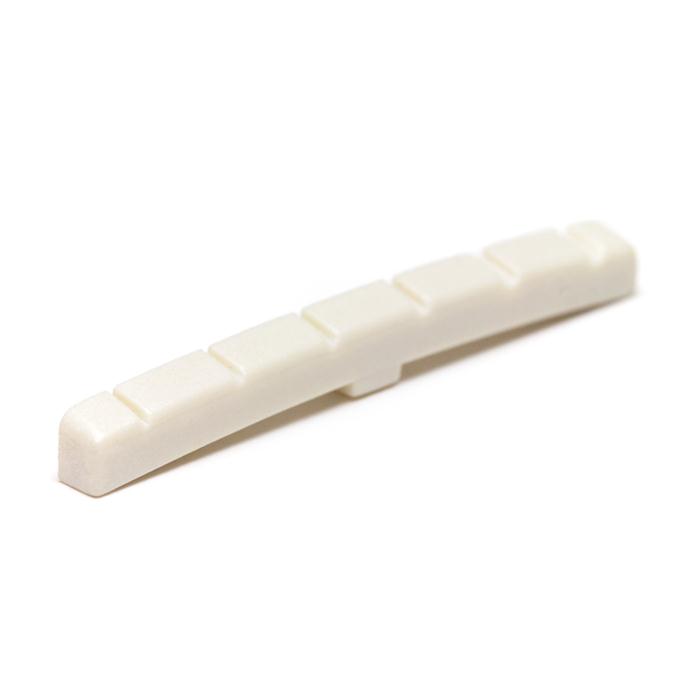 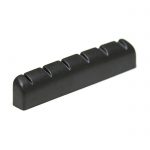 |
$50 |
Number of Frets
Our guitar necks can be ordered with 21, 22, or 24 frets.
21 fret necks have fingerboards that do not overhang the neck shaft at all. The 22 and 24 fret necks, however, have fingerboards that overhang. Especially in the case of the 24 fret fingerboards, care must be taken to move neck pickups an appropriate distance from the neck pocket so that the overhanging fingerboard and pickup do not interfere with each other. If you are getting a 24-fret neck and having us build a body to go with it, you will have the option to move the neck pickup back from the neck pocket to compensate for this overhang.
(Coming soon! Photos to show fretboard overhangs and the movement of neck pickup routes to compensate for increased fingerboard overhang on 24 fret necks.)
Fret Types and Sizes
Fret Materials
 Nickel-Silver. Nickel Silver is "standard" guitar (and bass, banjo, mandolin, etc.) fret wire that has been used for decades. Despite the name, the metal contains no silver at all. It is in fact an alloy of copper and nickel. In this case, 18% nickel is used.All frets wear down with use. The rubbing of the metal strings against the metal fret, combined with corrosive sweat and grime from your fingers flattens the top of the fret and may create slots in the frets. Some players wear down frets faster than others because they press the strings harder or they simply play more. When frets are worn "enough" they can be leveled and re crowned. But this is a costly service and it can only happen so many times before frets must be replaced (an even more costly operation). Nickel-Silver. Nickel Silver is "standard" guitar (and bass, banjo, mandolin, etc.) fret wire that has been used for decades. Despite the name, the metal contains no silver at all. It is in fact an alloy of copper and nickel. In this case, 18% nickel is used.All frets wear down with use. The rubbing of the metal strings against the metal fret, combined with corrosive sweat and grime from your fingers flattens the top of the fret and may create slots in the frets. Some players wear down frets faster than others because they press the strings harder or they simply play more. When frets are worn "enough" they can be leveled and re crowned. But this is a costly service and it can only happen so many times before frets must be replaced (an even more costly operation). |
 Stainless Steel. Stainless Steel frets are made from harder material than Nickel-Silver. Because of this, the frets wear more slowly. The hardness of the material is great... but there is a cost! The material is more expensive than nickel-silver and it is more work to install and work with these harder frets. Stainless Steel. Stainless Steel frets are made from harder material than Nickel-Silver. Because of this, the frets wear more slowly. The hardness of the material is great... but there is a cost! The material is more expensive than nickel-silver and it is more work to install and work with these harder frets. |
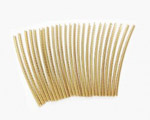 EVO Gold. This fret wire is from Jescar. These frets use Jescar's proprietary nickel-free hypoallergenic alloy. It contains no gold. This metal was originally created for folks with nickel allergies. The gold color is beautiful. EVO Gold. This fret wire is from Jescar. These frets use Jescar's proprietary nickel-free hypoallergenic alloy. It contains no gold. This metal was originally created for folks with nickel allergies. The gold color is beautiful. |
Fret Options
We offer the following fret options on our custom guitar necks:
| Fret Material | Size | Fret Width | Fret Height |
|---|---|---|---|
| Nickel-Silver | Medium | .095” | .047” |
| Jumbo Medium (Standard) | .104” | .047” | |
| Jumbo | .110” | .057” | |
| Stainless Steel | Medium | .095" | .047" |
| Jumbo | .110" | .057" | |
| Gold EVO | Jumbo | .100" 2.64mm | .051" / 1.19mm |
Hidden Fret Kerfs
This is a cool technique that dramatically improves the appearance of our necks without the expense (or changed aesthetics) of binding a neck. Basically, we but fret slots a bit shorter than the width of the fretboard and seat frets into the shorter slots, leaving the fretboard edge solid and clean. The fretboard looks better – and feels better since there are no fret slots for your fingers to slide over!
 |
 |
(click for larger images) |
|
This innovation is not available at most other custom neck shops at reasonable prices! Only at Alloy!
Guitar and Bass Neck Headstock Shapes
We offer several headstock shapes for our custom necks (click for larger images):
| Alloy | Photos Coming soon |
|---|---|
| Paddle | Photos Coming soon |
| Tilt-back Paddle | Photos Coming soon |
| LP | Photos Coming soon |
| LPJ | Photos Coming soon |
Tuner Holes
We offer a number of options regarding how holes are drilled in the headstock for tuners.
| Hole Style | Size | Example Tuners that will fit |
|---|---|---|
| None (headstock will be undrilled) | N/A | N/A |
| Vintage | 8.7mm / .345" | Fender Vintage Style Tuners, Kluson Vintage, Gotoh SXB510 |
| Modern | 10mm / .394" | Almost every modern tuner, including Gotoh SG381, Fender Modern Tuners. |
| Gotoh/Grover/Schaller |
7.8mm + 9.8mm .307" + .390" |
Gotoh, Grover and Schaller sealed tuners. Why bother with this counterbore? The sealed tuner's housing is a larger diameter than the threaded bushing. Under string tension, the bushing (and the peghead washer) can lean slightly in a single diameter tuner hole. This can damage the finish around the bushing and possibly cause tuning issues. A properly sized tuner hole prevents the problem. |
Please measure your tuners to be sure of your measurements! There have been many variations over the years. Tuner holes can be redrilled or reamed larger... but it is hard to do this keeping both sides of the holes clean. And we haven't figured out how to make the holes smaller.
If you have a unique or unusual tuner hole size need, please contact us.
